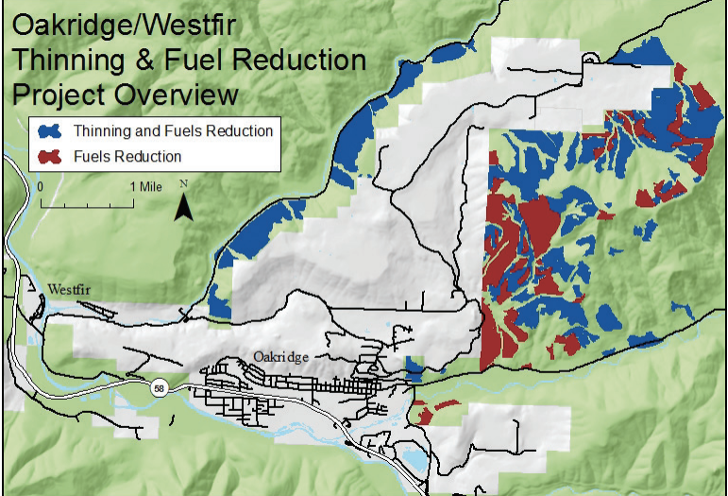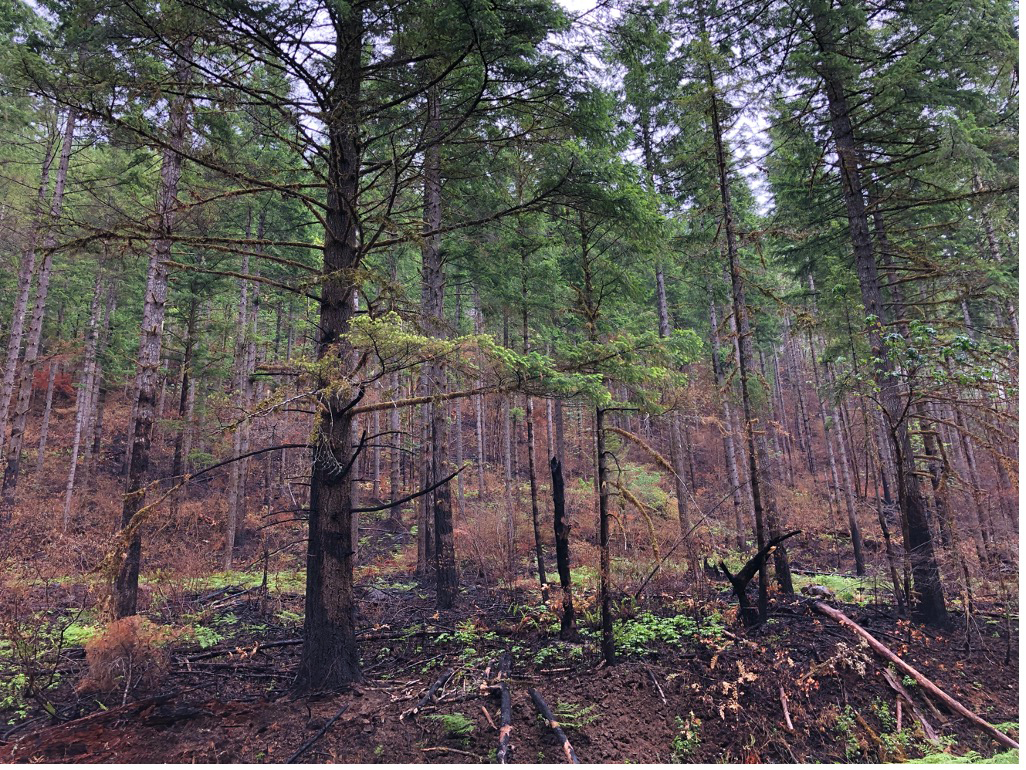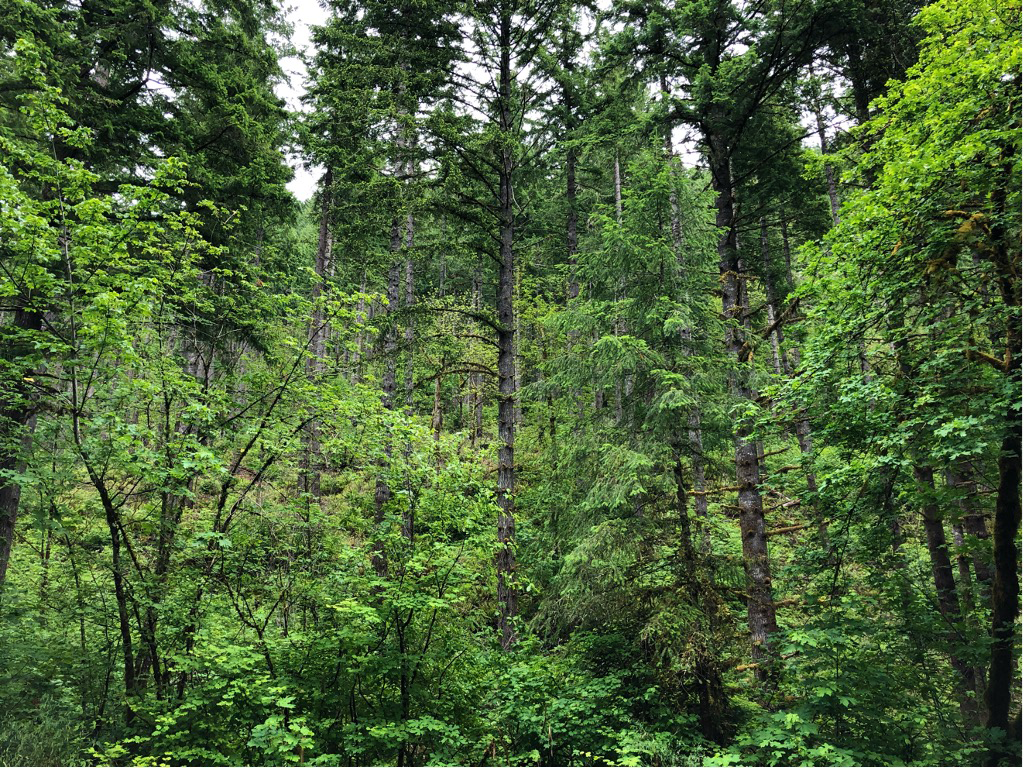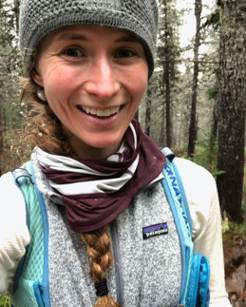By Danielle Curtis, 2021 Summer Legal Intern
On an uncharacteristically rainy morning in mid-June, myself, along with my fellow Cascadia team members, pulled into the Middle Fork Willamette Ranger Station. Here, we would meet with representatives from Oregon Wild, as well as a number of Willamette National Forest District Rangers and fuel planners.
The purpose of the visit was twofold. First, we were going to visit sites within the Oakridge/Westfir Thinning and Fuel Reduction Project (OWTFR). Visiting these sites would open the door to discussion on the effectiveness of these projects, and allow us to visually assess outcomes. Second, we sought to use discussions about these projects as a jumping off point to discuss future fuels reduction projects proposed in the Forest.
As an intern, I had the luxury of being able to quietly take it all in. Legal issues and logging concerns aside, I found it fascinating to watch the interpersonal interactions between the different groups unfold. Forest management and fire suppression is a fascinating subject matter and certainly not straightforward. At the end of the day, I’d like to believe that all groups represented on that tour share a mutual respect for the natural world. The bottom line, however, is that different organizations have different priorities, not to mention the motivations underlying them. Thus, as you might imagine, the tour was not a simple walk in the woods filled with idle chatter. Rather, the tour functioned more as a respectful, but not reserved, opportunity for different parties to present their viewpoints in an effort to inform future decision making.

The purpose of the OWTFR Project is to reduce the risk of future catastrophic wildfires. The project operates in two parts. First, forests are thinned. This is accomplished by removing trees from stands in order to decrease the density. Second, fuels reduction takes place. This is accomplished through prescribed burning of the debris left over on the forest floor after thinning. By reducing ground fuels and increasing space between the canopy, these methods aim to slow the spread of fire and keep it closer to the ground, allowing firefighters to more effectively intervene. These thinning and fuels reduction projects make sense in theory, but the reality is much more nuanced.
Often times when thinning and fuels reduction projects are proposed, older stands are slipped into the proposal alongside younger stands. Logging mature forests is problematic for far more reasons than a simple blog post can hash out. Further, thinning old forests is by no means the most effective method of fire reduction. On the contrary, the ramifications of logging old forests can often lead to an increased fire risk. Thus, mature stands are often tossed into thinning and fuels reduction proposals more as a money grab than a fire risk reduction strategy. That being said, it should come as no surprise that one of our goals on the tour was to address this concern of mature forest logging.
The extreme downsides of mature forest logging should not undercut the fact that logging of any kind comes with drawbacks. While Cascadia recognizes that in some cases thinning can be beneficial to protect communities from the spread of wildfire – more on that later – it comes at a cost. Interestingly, one of the points brought up by a District Ranger on the tour was that many people who own homes in high fire risk areas are opposed to the logging. These people would rather run the risk of a fire destroying their home than intentionally remove the trees that attracted them to the area in the first place. Risky? Perhaps. But in many ways these community members might be onto something. When discussing 2020’s Holiday Farm Fire, District Ranger Darren Cross commented that thinning and fuels reduction projects would not have made much of a difference in stopping the fire’s spread. The force of the wind and the speed with which the fire was traveling rendered it nearly impossible to slow down. The fire crossed rivers, and it’s difficult to imagine a much more effective fire break than a body of water.
On a related note, during the tour I noticed the terms “extreme” and “unusual” being used to discuss the 2020 fires. Given the rate of climate change and the effects already occurring, it is entirely likely that 2020 was not unusual so much as it was the start of a new normal. In that case, we need to critically examine the steps we are taking to preemptively reduce fire risk, especially when fuels treatment projects contribute certain negative climate impacts, and uncertain positive outcomes.


I’ll step off my soapbox now to say that fuels reduction projects do have a time and place. Agencies using prescribed fire and commercial thinning to fight fires can be a good thing when done correctly.
The devil is in the details, and one critical detail to keep in mind is that fires are a natural part of the forest ecosystem. The Forest Service has a bad legacy of fire suppression. Wildfires that should have burned in the past were put out. Consequently, stands have become overstocked, tree size and growth has been stunted, and species that don’t belong have moved in. On the one hand, ensuring public safety must be balanced with naturally allowing areas to burn. On the other hand, the reality is that often these wildfires have been put out not to protect the general public, but to protect neighboring private timber plantations.
If all of this sounds a bit confusing, it’s because it is. There’s a lot to unpack here. Fire management is not black and white, but in some ways that is a good thing. It means there is lots of room for compromise.
During the tour, discussions about compromise took place. More importantly, these discussions were productive. For instance, representatives from the environmental groups shared the aforementioned points on the necessity of fire to a healthy forest ecosystem. They suggested that the Forest Service might let more fires burn naturally, so long as they do not pose a safety risk. In theory, the more that fires naturally thin the forest, the less intentional thinning must be done. This benefits not only the ecosystem, but also the Forest Service itself. The reality is that fuels reduction projects are expensive; if more natural burning is allowed to occur, the Forest Service can save time and resources.
As it turns out, the Forest Service has already been considering a fuels reduction strategy along these lines. Inspired by fire management techniques in New Mexico, the fuels reduction planners shared their plans to implement the use of Potential Operational Delineations (PODs) to manage fire.
According to the Rocky Mountain Research Station (RMRS) branch of the Forest Service:
PODs are spatial units or containers defined by potential control features, such as roads and ridge tops, within which relevant information on forest conditions, ecology, and fire potential can be summarized. PODs combine local fire knowledge with advanced spatial analytics to help managers develop a common understanding of risks, management opportunities, and desired outcomes to determine fire management objectives.
Perhaps more importantly than what PODs are, is what they are intended to achieve. Echoing the sentiments I shared earlier, the RMRS explains,
Sometimes, fires resulting from natural ignitions can be strategically managed to achieve goals similar to a prescribed fire: ecological restoration, watershed health, reduced risk of catastrophic wildfire, and reduced future fire suppression costs. When values are likely to benefit, the right kind of fire can be managed for risk reduction and restoration objectives rather than immediately suppressed. Collaborative pre-planning during the PODs process helps to identify these opportunities, as well as conditions and locations where rapid initial attack may still be the best option to protect sensitive resources and assets. Where and when possible, leveraging natural ignitions for non-suppression objectives can reduce fire risk to adjacent high-value PODs over the near term, with benefits for maintaining lower risk conditions with future actions.
Essentially, PODs provide a method of forest management that would allow for a better balance between allowing fires to operate naturally within the ecosystem and ensuring community safety. As far as the Willamette National Forest is concerned, the idea of implementing PODs into fire management planning is still in the early stages, but the concept sounds hopeful.
Overall, I’d deem the tour worthwhile. Attendees were able to share perspectives, tradeoffs were acknowledged, and collaboration, at least to some degree, ensued. The trip ended on a positive note with ideas being floated for future tours including longer hikes to older stands, as well as rotating ranger districts and discussion topics. Most importantly, all parties agreed collaboration and communication are in everyone’s best interest.

Danielle Curtis
University of Oregon School of Law
J.D. Candidate 2023


